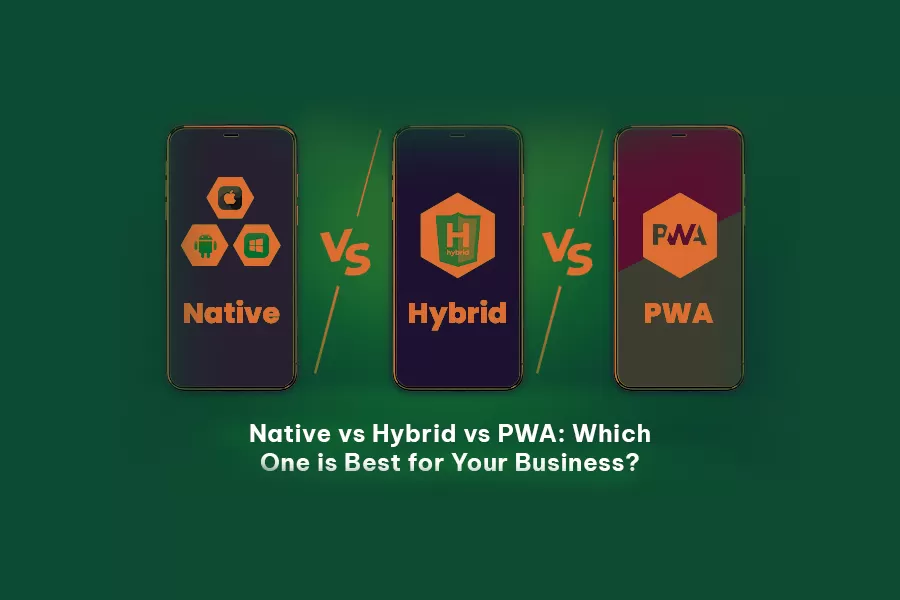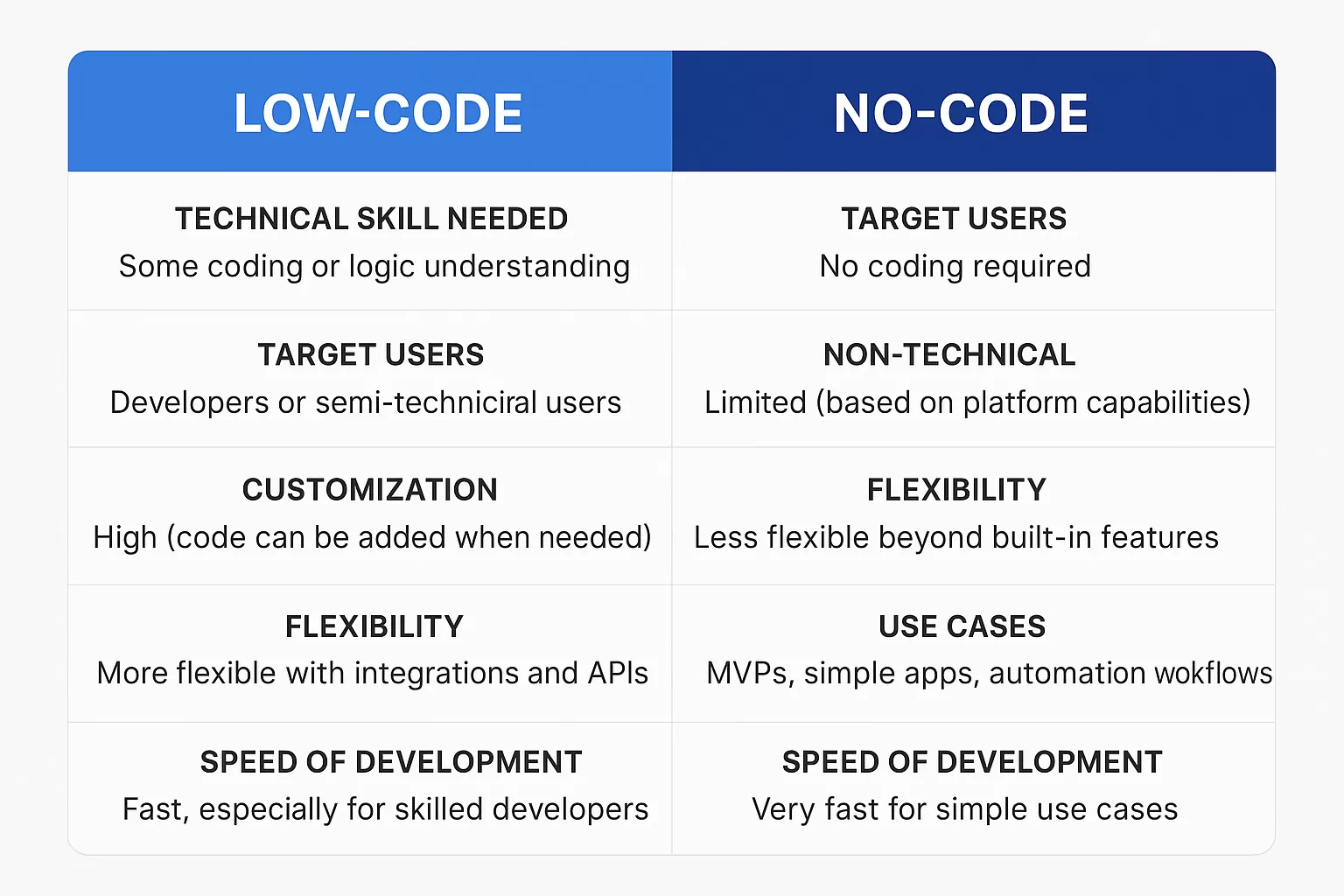When developing a mobile app for your business, one of the key decisions you'll face is choosing between Native, Hybrid, or Progressive Web Apps (PWA). Each of these approaches comes with its own set of benefits, challenges, and use cases. The decision depends on factors like performance requirements, budget, target audience, and time-to-market. Let’s break down the differences between these three approaches to help you make the best choice for your business.
1. Native Mobile Apps
Native apps are specifically developed for a single platform (either iOS or Android) using the platform’s programming language and development tools. For example, Swift for iOS or Kotlin/Java for Android.
Pros of Native Apps:
- Optimal Performance: Native apps are optimized for the platform, providing the best possible performance in terms of speed and responsiveness. They have direct access to all device features (camera, GPS, sensors, etc.) and are not constrained by a cross-platform framework.
- User Experience: Native apps offer the best user experience because they follow the platform's design guidelines (e.g., Material Design for Android, Human Interface Guidelines for iOS). This results in smooth animations, transitions, and consistent design.
- Full Device Integration: Native apps can fully utilize device capabilities, including notifications, Bluetooth, fingerprint scanners, and more. They also perform better for apps requiring intensive tasks like gaming, AR/VR, or heavy data processing.
- App Store Visibility: Native apps can be published on official app stores (Google Play Store for Android and Apple App Store for iOS), which provides access to millions of users. This increases visibility and credibility for your app.
Cons of Native Apps:
- Higher Cost: Developing native apps requires separate codebases for iOS and Android, which can lead to higher development costs. You’ll also need separate development teams or expertise for each platform.
- Longer Time-to-Market: Since you’re developing two separate apps, it takes more time to launch both versions.
- Maintenance Overhead: With native apps, you need to maintain two codebases (one for iOS and one for Android), which can increase the maintenance effort and cost over time.
When to Choose Native Apps:
- When performance is critical (e.g., gaming apps, high-performance business tools).
- When you need deep integration with device features (e.g., AR/VR, heavy use of sensors).
- If your business strategy involves strong app store visibility and branding.
- When you have the budget and resources for building and maintaining separate iOS and Android apps.
2. Hybrid Mobile Apps
Hybrid apps are built using a single codebase (typically with web technologies like HTML, CSS, and JavaScript) and wrapped in a native shell that allows them to run on both iOS and Android platforms. Frameworks like Flutter, React Native, Ionic, PhoneGap, and Xamarin are commonly used for hybrid app development.
Pros of Hybrid Apps:
- Cross-Platform Development: Hybrid apps allow you to write one codebase that works on both iOS and Android. This significantly reduces development time and costs since there is no need to develop two separate apps.
- Faster Time-to-Market: Since you're using a single codebase, hybrid apps typically take less time to develop and deploy compared to native apps.
- Code Reusability: The same codebase can be reused across different platforms, including mobile, web, and desktop apps, increasing the efficiency of your development process.
- Access to Device Features: While hybrid apps may not have the same level of access to device features as native apps, modern hybrid frameworks (like React Native) offer near-native performance and can access most device capabilities through plugins.
Cons of Hybrid Apps:
- Performance Limitations: Hybrid apps rely on a web view, which means they don’t offer the same level of performance as native apps. Complex features such as heavy animations or graphics-intensive operations may not run as smoothly.
- UI/UX Challenges: Hybrid apps may not always provide a user experience that feels as native as apps built specifically for iOS or Android. There can be inconsistencies in UI elements across platforms, and fine-tuning the design for both platforms can be challenging.
- Limited Native Features: While hybrid apps can access most device features, some advanced or platform-specific features may not be available or may require additional plugins or native code.
When to Choose Hybrid Apps:
- When you want a cross-platform solution but need to save time and budget.
- When your app doesn’t require intensive native features or complex animations.
- If your business needs an app on both iOS and Android and you're aiming for quicker deployment.
- When you're willing to compromise slightly on performance for the benefit of a unified codebase.
3. Progressive Web Apps (PWAs)
PWAs are web applications that behave like native apps on a mobile device. Built using HTML, CSS, and JavaScript, they offer a near-native experience but run directly in a web browser without the need to download from an app store. PWAs can be accessed from any device with a browser, including desktops and smartphones, and can be added to the home screen.
Pros of PWAs:
- No App Store Dependence: PWAs are not bound by the approval process of app stores like Google Play or the Apple App Store, allowing you to bypass those fees and regulations.
- Faster Updates: With PWAs, you can push updates to users instantly without the need for approval from app stores, ensuring that your app is always up to date.
- Cross-Platform Access: PWAs work across multiple platforms and devices (iOS, Android, desktop), and they adapt to the user’s device. This makes them ideal for reaching a broad audience with a single app.
- Offline Capabilities: PWAs can work offline or with a limited internet connection by caching data on the device. This feature can be crucial for users in areas with intermittent connectivity.
- Lower Development and Maintenance Costs: PWAs are cheaper to develop and maintain than native or hybrid apps because they require only a single codebase and no need for separate iOS and Android versions.
Cons of PWAs:
- Limited Device Features: PWAs have limited access to device hardware (e.g., sensors, Bluetooth, NFC), especially on iOS. This can make them unsuitable for apps that require deep device integration or performance-heavy features.
- Performance and Speed: While PWAs can offer a fast user experience, they may not match the performance of native apps, especially for tasks requiring complex processing or intensive graphics.
- Limited App Store Presence: PWAs do not appear in app stores (though some platforms like Google Play are starting to support PWAs). This limits discoverability through app stores, which can be a significant drawback if you're relying on app store visibility for growth.
- Inconsistent Browser Support: While modern browsers support PWAs, some features might not work consistently across all platforms or browsers, especially on iOS.
When to Choose PWAs:
- When you want a cross-platform app that works on both mobile devices and desktops without requiring users to download it from an app store.
- If you want to lower costs and accelerate time-to-market for a broad audience.
- If your app doesn’t require heavy device features (like camera, Bluetooth, etc.) or high performance.
- When your business needs instant updates without waiting for app store approval.
- If you’re targeting users who have intermittent internet access or need offline functionality.
How to Choose the Right App for Your Business
- Go for Native Apps if:
- You require the best performance and full access to device capabilities.
- Your app demands complex features, such as gaming, AR/VR, or heavy animations.
- You’re targeting iOS or Android-specific users and want a seamless, platform-optimized experience.
- Go for Hybrid Apps if:
- You need to build apps for both iOS and Android with a shared codebase.
- You’re looking for a faster time-to-market and a lower budget but don’t mind some trade-offs in terms of performance and UI consistency.
- Your app doesn’t need extensive native device integration or heavy processing power.
- Go for PWAs if:
- You want to create an app that works across multiple platforms (mobile and desktop) with lower development and maintenance costs.
- You need fast updates, offline functionality, and easy discoverability via web search.
- Your app doesn’t require deep access to device features or the highest performance.
Conclusion:
Each mobile app approach—Native, Hybrid, and PWA—has its own strengths and is suitable for different business needs. When making your decision, consider the nature of your app, budget, target audience, and platform requirements. For high-performance, feature-rich apps, Native is the way to go. If you need cross-platform compatibility with quicker deployment, Hybrid might be ideal. And for businesses looking for a low-cost solution with broad device reach and fast updates, PWAs provide an attractive alternative.











